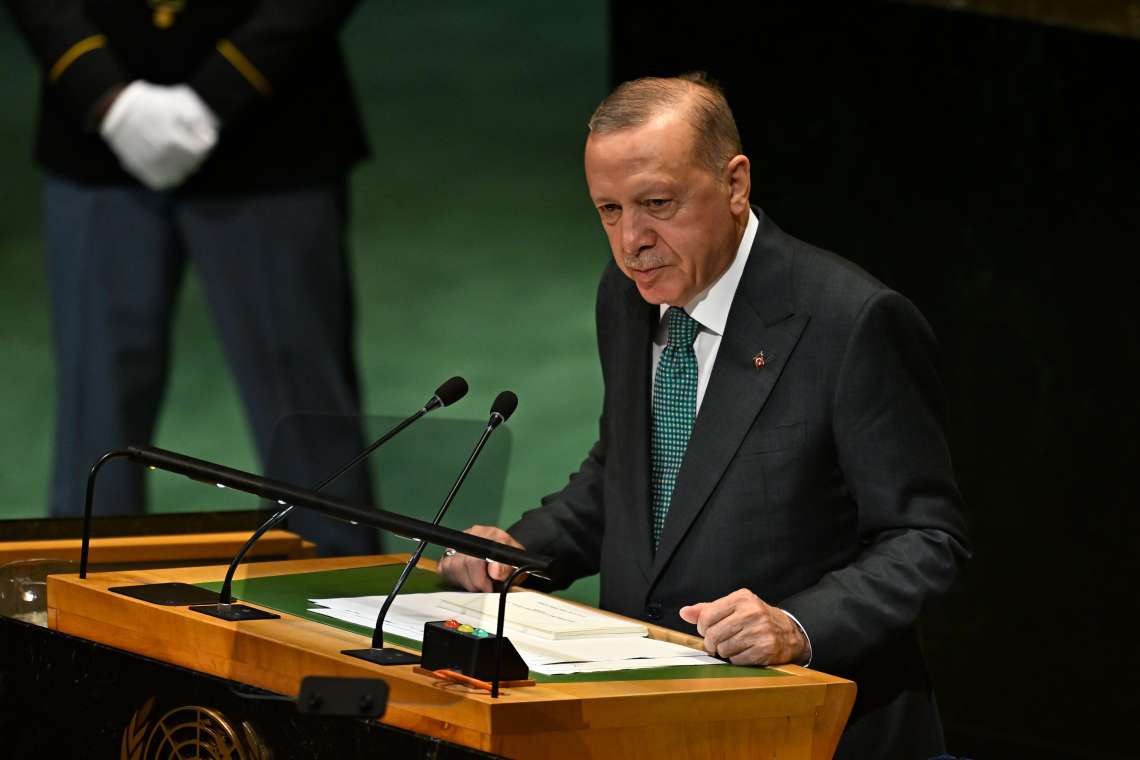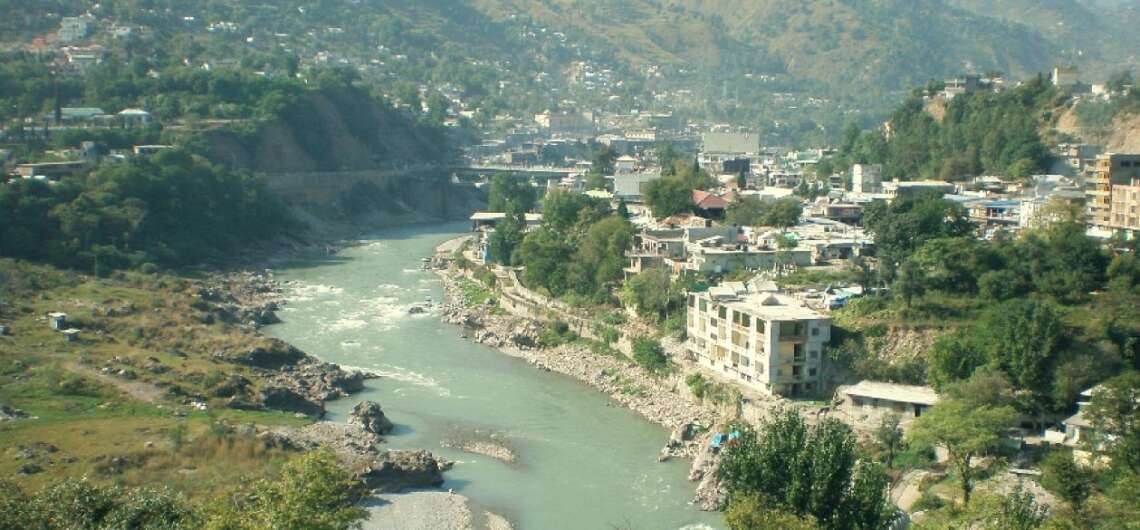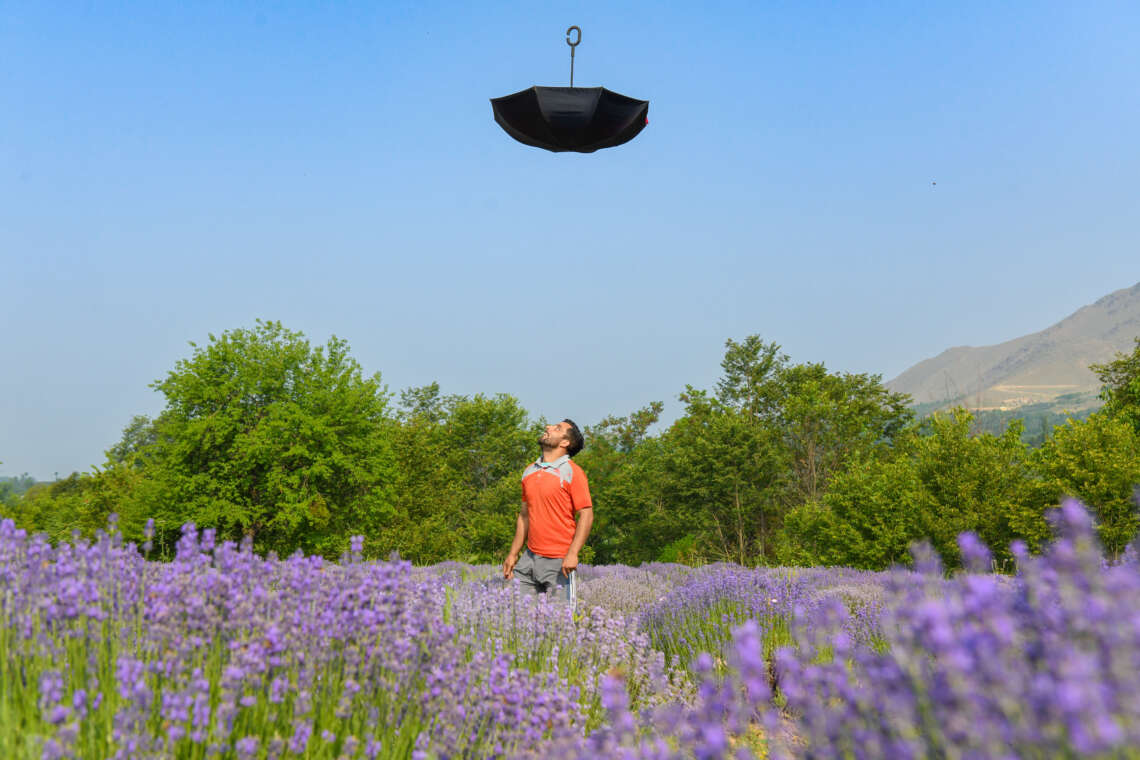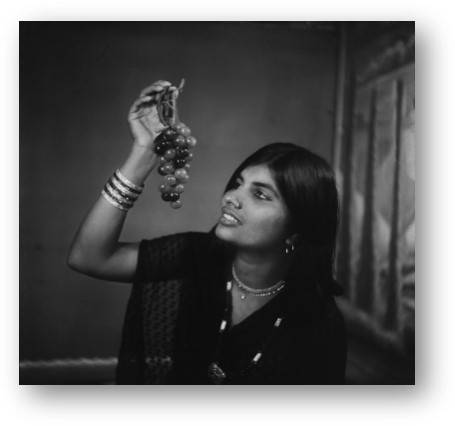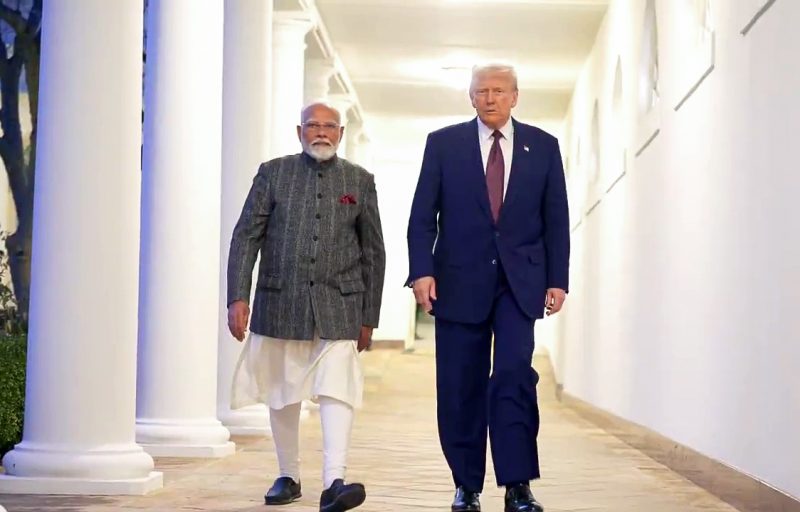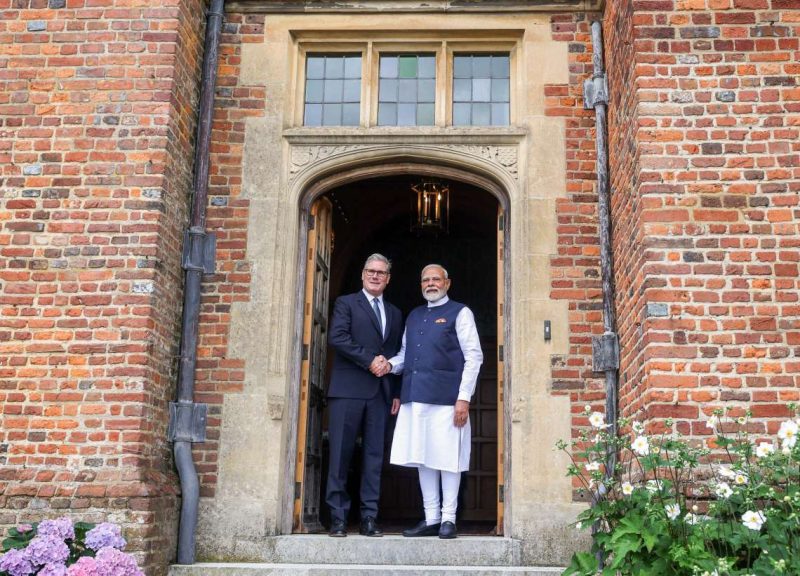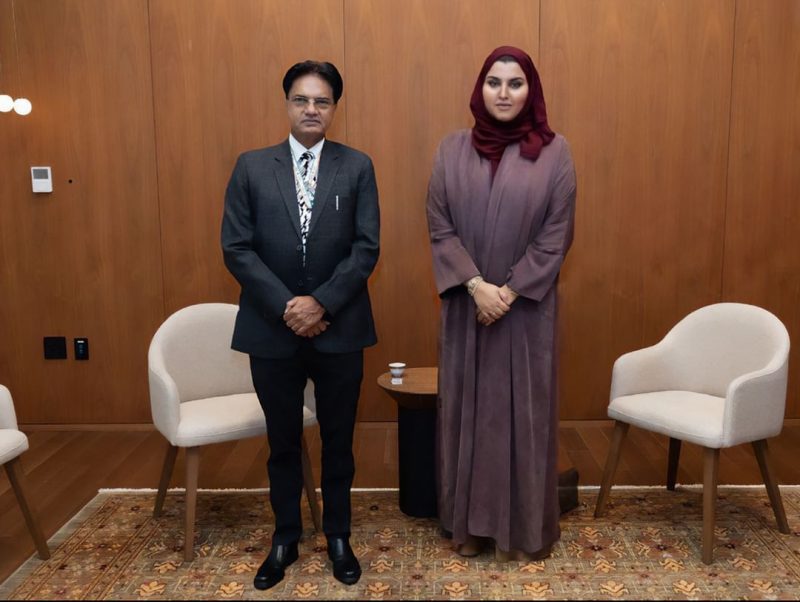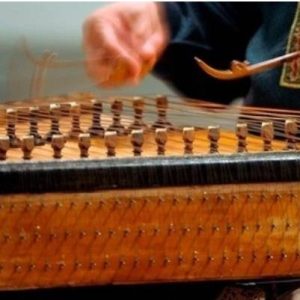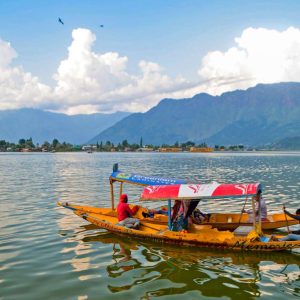In a sharp contrast to the past, there were no protest demonstrations, no clashes, no Pakistani slogans or flags anywhere in Kashmir either on Pakistan’s or India’s Independence Day, writes Ahmed Ali Fayyaz
While walking all the way from Dal Lake to Srinagar’s Raj Bhavan and leading a thick troupe of his civil and Police officers—for the first time by a Governor or Lieutenant Governor in Kashmir—Manoj Sinha told the media on Sunday that raising of the Pakistani flags had become a part of the valley’s history. “Now, only the Indian national flag will flutter here”, the Lieutenant Governor asserted.
Sinha’s big statement came on 14th of August, Pakistan’s Independence Day, when the green flags would be seen everywhere from trees to lampposts across the valley for some years until the recent past. On 13, 14 and 15 August this year, Prime Minister Narendra Modi’s “Har Ghar Tiranga” campaign witnessed a spectacular blitzkrieg in the valley. Sinha had reasons to his optimism.
The LG was speaking to the media after presiding over a ceremony at which a 7,500 square feet Tricolour was displayed at the banks of the world famous lake. Organised jointly by the Institute of Hotel Management Srinagar of the Union Ministry of Tourism and Himalayan Mountaineering Institute Darjeeling, this event was part of the denouement of the nationwide patriotic campaign “Azadi Ka Amrut Mahotsav” on the 75th anniversary of the Indian Independence.
On the same day, a human chain of around 500 Kashmiris shouldered arguably the country’s longest tricolour, 1850 metre long, at the recently inaugurated Bakhshi Stadium in Srinagar. An effervescent multitude of 5,000 common people, officials, students and sportspersons cheered Sinha’s presence at the historic occasion.

On the concluding day, Monday 15 August, the Indian national flags of multiple sizes, generated a valley-wide festival of colours. The Jammu and Kashmir Police, CRPF and other paramilitary forces, Army, school and college students, sportspersons, youth clubs, political parties and other organisations hoisted the national flag and carried rallies against the beats of “Aey Maan Tujhe Salaam” and “Sare Jehan Se Achha Hindustan Hamara”.
In a sharp contrast to the past, there were no protest demonstrations, no clashes, no Pakistani slogans or flags anywhere in Kashmir either on Pakistan’s or India’s Independence Day. Arguably this change comes after 5 August 2019, when Modi’s government terminated J&K’s Statehood and special status and bifurcated it into the two Union Territories of J&K and Ladakh.
Admittedly nothing is permanent or ultimate in the political histories but all the naysayers who predicted bloodshed over the proposed abrogation of Article 370 in 2019 have been proved wrong in the last three years.
Two particular political ideologies have dominated Kashmir in the last 23 years. On the one side, Farooq Abdullah’s National Conference (NC) and Mufti Mohammad Sayeed’s Peoples Democratic Party (PDP) have represented and upheld a sub-national aspiration, respectively demanding ‘greater autonomy’ and ‘self-rule’. On the other side, BJP has unapologetically pursued and finally realised its goal of the abrogation of Article 370 and, in its words, “total integration” with the rest of the country.

Of the two mainstream majors, the combination of the militants, separatists and Pakistan has been discernably soft towards Mufti’s party for substantial reasons. Both Farooq Abdullah and Omar Abdullah too have issued certain statements in brazen appeasement of the separatists in the last few years but the other side has never issued any amnesty for Sheikh Abdullah’s party or dynasty. They hold them responsible for having helped India to capture and integrate Jammu and Kashmir. It is primarily for this reason that the militants are claimed to have killed more than 4,000 workers, including Ministers and legislators of the NC since 1989.
While NC’s Maqbool Sherwani became the Pak army guided tribal raiders’ first target at Baramulla in 1947, NC’s Mohammad Yousuf Halwai was the first civilian or political worker killed in Kashmir in the beginning of militancy in August 1989.
Contrarily, Mufti assumed Pakistan’s green and Salahuddin’s pen-and-inkpot for PDP’s flag colour and the election symbol. When he became Chief Minister with the Congress support in 2002, despite winning only 16 seats in a House of 87 seats, he said in his first public address at Ganderbal that he was the representative of the militants “who don’t need to carry guns any more”.

Going backward, there was no terrorism in 2002-2008 which had been militarily as well as politically contested in 1996-2002. The world knows who created a fuss over the allotment of a small piece of land to Shri Amarnath Shrine Board which finally brought down Ghulam Nabi Azad’s government in July 2008 and led to a four-month long turmoil. That particular agitation not only revived separatism and militancy but also divided the people of Jammu and Kashmir on regional and communal lines. The State, with different fluctuations, remained in that toxic mode till June 2018. In fact, the polarisation has not yet subsided completely.
In 2009, Mehbooba Mufti raised a hell over an incident of the mysterious death of two young women in Shopian. She alleged publicly that they had been “raped and murdered”. She alleged that the “rapists and killers” had applied vermilion into their hairline before killing them. At least 8 people got killed and hundreds injured in that agitation.
Worse came in 2010 when around one hundred people got killed and thousands injured in a season of clashes.
And the climax came during Mehbooba’s own government when the Hizbul Mujahideen poster boy Burhan Wani was killed in an encounter with security forces in Kokernag area of the Anantnag district. It was during this period that the militants captured total political space and their narrative ruled the roost despite the BJP being the PDP’s coalition partner. Chief Minister Mehbooba said unapologetically that if she would have known about Burhan Wani’s presence in the village, she would have withdrawn the forces and not allowed them to kill him.
The consequences were obvious. From July to October in 2016, Pakistan’s slogans and flags dominated every inch of Kashmir, in fact from Uri and Kupwara to Bhaderwah and Poonch-Rajouri in Jammu. Even as around hundred more people died in the clashes and thousands of the Police and security forces personnel were injured, the hatred against India reached its highest point of the previous 70 years. Even after the street turbulence died down, Pakistan, her militants and separatists were in total command of the situation in Kashmir in 2017 and 2018. Most of the cricket and football matches those days would start with playing of the Pakistani national anthem and hoisting of that country’s national flag.
The Police and the security forces experienced the history’s worst demoralisation. Hardcore terrorists escaped from jails and hospitals and killed Police and forces men in broad daylight dare-devil actions on the Highways. This was the period when the hardcore pro-Pakistan leader Syed Ali Shah Geelani’s prediction came fully true. He had been repeatedly warning that the land would shrink in Kashmir for anybody taking India’s side. It was the time when the dead body of the Congress party’s founder in Kashmir, Mohammad Shafi Qureshi, was interred in Delhi as there was no possibility of the family and others attending his mourning in Kashmir.
The turning point came in three historic developments in 2018-19. First the much embarrassed BJP withdrew support from Mehbooba and brought down her government. Second, the Modi government withdrew entire VVIP status and security cover from the separatists immediately after the killing of 40 CRPF men in an unprecedented car bomb blast. Third was the abrogation of Article 370 which was on the BJP’s agenda from its day one but had never been implemented.
In total contrast to the Pakistani colours and slogans, after August 2019, at least for the last two years, there has been peace. Now there are no funeral processions for the militants killed in encounters, no gun salutes to them at their tombstones, no clashes or public attacks on the Police or security forces. Dominance of the Indian colours and slogans in 2019-2022, in sharp contrast to 2015-2018, has a logic and reason which many in today’s Kashmir realise.
(The content is being carried under an arrangement with indianarrative.com)



